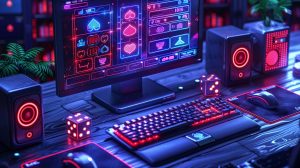Visual effects have revolutionized storytelling, creating immersive worlds and lifelike characters. Motion capture (mocap) has been a game-changer, evolving from basic body tracking to advanced systems that capture subtle movements and expressions. This technology allows filmmakers to craft digital characters that move and emote naturally, enhancing realism beyond traditional animation. To explore movies showcasing incredible visual effects, check out https://izlevo.com/.
Mocap is now indispensable in blockbusters, animated films, and virtual productions, bridging live performance and digital creation. Its growing accessibility allows productions of all sizes to benefit. This article explores mocap’s role in filmmaking, its process, benefits, famous examples, and future potential.
What is motion capture?
Motion capture records movement, converting it into digital data to animate characters or objects in films, games, and virtual environments. Performers wear suits with sensors or markers tracked by cameras, which capture movements in 3D. Software then translates this data into digital animations.
There are two types: marker-based systems, which offer high precision in controlled settings, and markerless systems, which provide flexibility but can be less accurate. Beyond films, mocap is widely used in sports, biomechanics, and virtual reality for its ability to capture realistic motion efficiently.
The rise of motion capture in films
Mocap has become a cornerstone of modern filmmaking. Early uses in the 1990s involved simple body tracking, but films like The Lord of the Rings showcased its potential with Gollum, a digital character brought to life with emotional depth. Avatar took mocap further, blending full-body and facial tracking with CGI to create immersive worlds.

Today, mocap allows actors’ movements and expressions to be seamlessly transferred to animated characters, enhancing realism. Advances in technology give filmmakers greater creative freedom, blending live action and digital elements in transformative ways.
Benefits for modern film production
Mocap delivers realism, efficiency, and creative flexibility. By capturing real human movement, it creates fluid, natural animations difficult to achieve manually. It also saves time and costs, allowing filmmakers to quickly capture performances and focus on storytelling.
The technology ensures consistent character movements and enables precise tweaks without losing authenticity. Mocap adapts to different shooting environments, opening new creative possibilities for complex scenes and action sequences.
In short, mocap combines live performance with digital animation to create engaging, efficient, and visually stunning results.
Behind the scenes: how it works
On set, actors wear mocap suits with sensors or markers tracked by cameras as they perform. Technicians ensure accurate tracking, capturing every gesture and expression for digital replication. After filming, data is processed, and animators rig it to digital characters, fine-tuning movements and synchronizing expressions.
This process allows physical performances to translate seamlessly into digital animation, preserving the actor’s nuances while enhancing the final product.
Famous examples in films
Mocap has defined iconic characters and films. Gollum in The Lord of the Rings showcased its ability to convey complex emotions. Avatar pushed boundaries with full-body and facial tracking, creating believable digital beings. The Planet of the Apes reboot used mocap to portray intelligent apes with emotional depth.
In the Marvel Cinematic Universe, characters like Rocket Raccoon and Thanos rely on mocap for lifelike movement and expressions, making their performances authentic and engaging.
These examples show how mocap has transformed filmmaking, enabling vivid, emotionally rich characters and worlds that captivate audiences.




